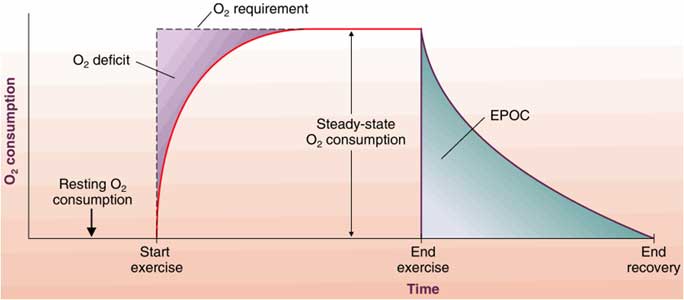Wouldn’t it be awesome if your body still continues to burn calories after a workout, even if you’re not actually working out? Here’s the good news. Yes, you can! Today’s post will talk more about this after burn effect.
You decided to go for a 30 min jog this beautiful morning. You put on your running shoe, turn on the music and set up your watch. You start to jog and you feel like you’re out of breath already. You’re probably thinking that you must be in a terrible shape because you’re exhausted before you could even reach the 5th lamp post. You probably heard someone telling you to continue and you’ll feel better after that. You push on and after 5 minutes or so, you start to catch your breath and you feel better. Sounds familiar? Let me explain as simple as I can.
Whenever you commence an exercise, your body immediately requires a certain amount of oxygen to metabolize fuel from your body. At this point, your cardiorespiratory system has not fully responded yet and your muscles start to accumulate lactate due to the lack of oxygen, bringing you to an anaerobic state (without oxygen). This stage explains why you feel uncomfortable when you just started jogging. As you continue, your cardiorespiratory system gradually adjusts to keep up with the demand until you reach a steady state. This usually happens 5-10min after commencing your exercise, hence called the warm up stage. Once your oxygen consumption has met its requirement, you start to feel better. You are now at the aerobic state (with oxygen).
Now, here’s the interesting part. Once you seize exercising, the exact opposite occurs. Your muscles no longer need the large amount of oxygen you consumed because your muscles no longer need as much fuel to be metabolized. Your cardiorespiratory system does not adjust as immediately as your muscles and you shift to the EPOC stage known as “excess post-exercise oxygen consumption”. In other words, you’re consuming more oxygen than your body needs. This explains why you’re still panting even though you stopped running. As you cool down, your cardiorespiratory system gradually slow down and take in less oxygen.
Here’s the good news. The more oxygen you consume, the more calories you burn. During the EPOC stage, your body is still consuming more oxygen than required, burning calories as it gradually declines. In other words, although you’ve stopped jogging, your body is still actively burning calories. This is called the EPOC effect.
Research has shown that higher intensity workouts such as HIIT and interval training stimulate a longer EPOC effect compared to lower anaerobic workouts. The longer the EPOC effect, the more after burn you get. The more after burn you get, the more calories you burn while you are at rest. Higher intensity exercises also help increase your metabolic rate – increasing your oxygen requirements during workout, thus burning more calories over the long run.
In short, you can take advantage of the EPOC effect in your workout program by performing more higher intensity workouts to maximise weight loss and improve cardiovascular fitness. But before you begin, it is important to seek your doctor’s advice and consult a certified personal trainer before beginning any vigorous exercise.


